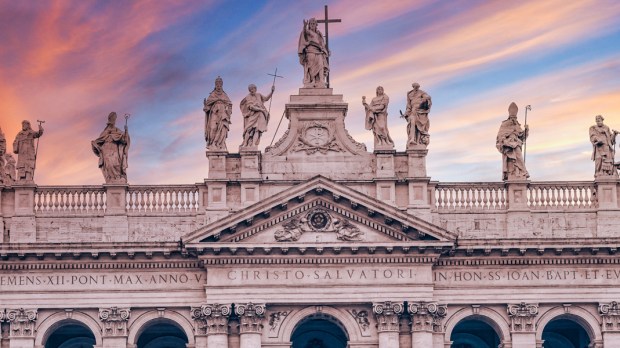Throughout the liturgical calendar, there are a handful of feasts for the dedication of various “major” basilicas.
These basilicas are located in Rome and have been celebrated by the Church for many centuries.
The word “major,” doesn’t distinguish its size or architectural beauty, but it’s historical importance.
The Catholic Encyclopedia gives a brief explanation.
To the former class belong primarily those four great churches of Rome (St. Peter’s, St. John Lateran, St. Mary Major, and St. Paul-without-the-Walls), which among other distinctions have a special “holy door” and to which a visit is always prescribed as one of the conditions for gaining the Roman Jubilee. They are also called patriarchal basilicas, seemingly as representative of the great ecclesiastical provinces of the world thus symbolically united in the heart of Christendom.
- St. John Lateran is the cathedral of the pope, the Patriarch of the West.
- St. Peter’s is assigned to the Patriarch of Constantinople,
- St. Paul’s to the Patriarch of Alexandria,
- St. Mary Major to the Patriarch of Antioch.
- St. Lawrence-outside-the-Walls is also reckoned as a greater basilica because it is specially attributed to the Patriarch of Jerusalem.
Furthermore, since they are so closely tied to the pope, “they possess a papal throne and an altar at which none may say Mass except by the pope’s permission.”
These major basilicas are also some of the oldest churches in Rome, dating back to the 4th and 5th centuries.
There exists no other major basilicas outside Rome, though there are many “minor” basilicas scattered on nearly every continent.



